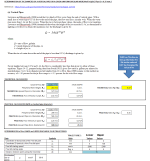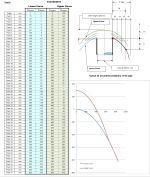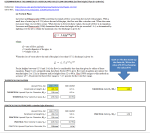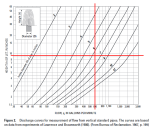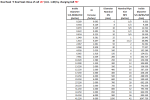Discharge flow from an upward Pipe (uniform weir or jet)
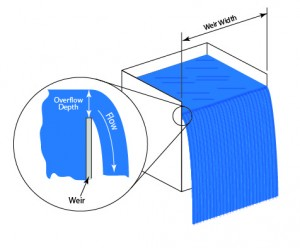
Description
This file determines the following parameters for two kinds of flow occurence from the end of a vertical pipe:
A) Circular weir discharge: The required pipe diameter, the weir height and the weir discharge trajectories for a vertical distributor (Uniform Circular Weight tab), and;
B) Jet flow discharge: The required pipe diameter and the peripheral jet height (Jet Flow Discharge tab)
The calculation is based on the Lawrence and Braunworth works and formulae(1906)
Calculation Reference
Piping Calculations
Pressure Drop in Pipes
Processing Plant
Lawrence and Braunworth published several works and formulae in 1906 related to the design and analysis of centrifugal pumps. Their work was based on experimental data and mathematical modeling of fluid flow in centrifugal pumps. The formulae developed by Lawrence and Braunworth are still used today in the design and analysis of centrifugal pumps.
Some of the key formulae developed by Lawrence and Braunworth include:
-
Impeller diameter: The impeller diameter can be calculated based on the required flow rate, head, and speed of the pump, using the formula D = (Q/H)^(1/2) * N^(1/3), where D is the impeller diameter, Q is the flow rate, H is the head, and N is the speed.
-
Specific speed: The specific speed is a dimensionless parameter that characterizes the shape and performance of a centrifugal pump. It can be calculated using the formula Ns = N * (Q)^(1/2) / H^(3/4), where Ns is the specific speed, N is the speed, Q is the flow rate, and H is the head.
-
Head-capacity curve: The head-capacity curve describes the relationship between the head and flow rate of a centrifugal pump. Lawrence and Braunworth developed an empirical formula for the head-capacity curve, which is still used today: H = kQ^(2)/D^2, where H is the head, Q is the flow rate, D is the impeller diameter, and k is a constant that depends on the pump geometry and operating conditions.
-
Pump efficiency: The efficiency of a centrifugal pump can be calculated based on the head and power consumption of the pump, using the formula ? = H * Q / (g * P), where ? is the efficiency, H is the head, Q is the flow rate, g is the gravitational acceleration, and P is the power consumption.
These formulae, developed by Lawrence and Braunworth in 1906, are still used today as the basis for the design and analysis of centrifugal pumps, and have been refined and expanded over the years to account for more complex geometries and operating conditions.
Calculation Preview
Full download access to any calculation is available to users with a paid or awarded subscription (XLC Pro).
Subscriptions are free to contributors to the site, alternatively they can be purchased.
Click here for information on subscriptions.

